“Looking back, we could have developed a much more capable force much earlier, if we had just made up our mind as to what we wanted to achieve with [the guerrillas].”1— BG Glenn Muggelberg, CCRAK Operations Officer, 1953
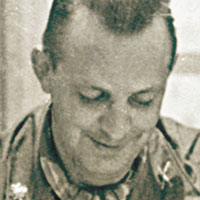
ANALYSIS
DOWNLOAD
Operation GREEN DRAGON, the “largest [guerrilla] airborne operation” of the war, began on the cold night of 25 January 1953.2 Ninety-seven North Korean guerrillas and fifteen hundred pounds of infantry weapons and ammunition were airdropped into the snowy mountains east of P’yongyang. Their mission: to establish a long-term guerrilla base in the interior to harass the North Korean military. More than a month passed without radio contact. Suddenly, the team began issuing sporadic reports. GREEN DRAGON was down to thirty-one men and needed reinforcement. Suspicious, the Far East Command’s (FEC) Combined Command for Reconnaissance Activities, Korea (CCRAK) was reluctant to reinforce a unit that was most likely compromised.3
Two months later (April 1953) GREEN DRAGON ‘upped the ante’ by reporting that it had recovered “five downed U.S. airmen” and were awaiting pickup arrangements.4 After contacting the team to hear the report firsthand, CCRAK decided to recover the airmen and reinforce GREEN DRAGON. On the night of 18 May 1953 fifty-seven more guerrillas were dropped with equipment and instructions for extracting the Americans. They employed a ‘snatch’ rig that enabled a fixed-wing aircraft to pick the airmen up individually. But when the aircraft lined up for its first recovery, it “got the hell shot out of it.” They aborted the mission.5 Although GREEN DRAGON broadcasted intermittently for months, CCRAK labeled them as compromised. None of the guerrillas or Americans ever returned.6
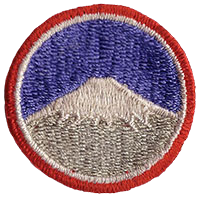
Command SSI
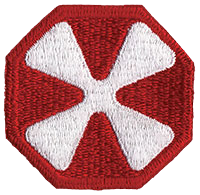
States Army SSI
GREEN DRAGON was typical of a CCRAK-directed operation during the Korean War. Besides delivering 150 trained guerrillas and a ton of military equipment to the enemy, it accomplished nothing. Fortunately for the Eighth U.S. Army (EUSA) guerrilla command, CCRAK directed few operations on its own and had little impact on their day-to-day activities. Because various published accounts present conflicting information on CCRAK, one needs to understand the unit’s organization, limitations, capabilities, and issues. This study traces the origins of CCRAK, keeping it in context. The rationale for the creation of CCRAK and an assessment of mission performance are presented.
The idea of a theater-level headquarters element to oversee and direct the operations of the many organizations employing North Korean guerrillas was discussed at the FEC level beginning in January 1951.7 The EUSA, the Fifth Air Force, the British Royal Marines, the U.S. Marine Corps, the Republic of Korea (ROK) Army and Marine Corps, and the Central Intelligence Agency (CIA) employed North Koreans and Chinese as intelligence agents and guerrilla raiders behind enemy lines. Failure to coordinate these activities at theater-level led to frequent instances of fratricide.8 Meetings were held to coordinate and deconflict guerrilla operations, but these were tactical ‘band aids.’9 To establish lasting control over all guerrilla actions throughout the peninsula, a theater-level approach was required. But first, changes were needed in FEC leadership and organization.
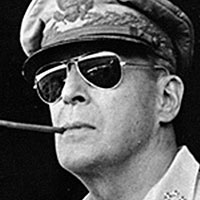

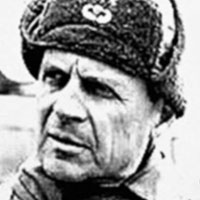
The roots of General (GEN) Douglas A. MacArthur’s FEC organization date to his General Headquarters (GHQ), Southwest Pacific Area (SWPA) in WWII. In 1945, MacArthur built FEC around his SWPA structure and the ‘Bataan Gang.’ Although this approach assured a smooth transition and enhanced continuity, it also perpetuated bad habits, flawed practices, and inefficiencies. For example, in the Philippines GEN MacArthur delegated all responsibility for guerrilla operations to his Deputy Chief of Staff, Intelligence (G-2), MG Charles A. Willoughby. That situation continued in the FEC despite conflicting with assigned staff functions and existing Army doctrine.10
Normal staff functioning places ‘operations’ under the staff direction of the G-3. FEC ignored that principle when it placed an operational combat unit under the staff cognizance of the G-2. That was not the only piece of doctrine that FEC disregarded. According to the U.S. Army’s contemporary doctrinal publication on guerrilla operations, FM 31-21, a theater command should “organize a theater special forces command on the same level as the theater army, navy, and air” commands. The doctrine also specified that “All units engaged in special forces operations and responsible to the theater commander are assigned to” that command so that unity of effort can be effectively achieved.11 In going against existing doctrine, FEC basically pointed CCRAK down the path to failure.
Furthermore, FEC under MacArthur (like his WWII SWPA), was not a unified, joint, or combined command structure as we have today. FEC had U.S. Navy and Air Force service component commands, but not a separate Army service component command until later under GEN Ridgway. MacArthur served both as commander of the FEC and as the Army component commander, generally considering them one and the same. Thus FEC, like SWPA, placed “the air and naval component commands under the ground component command.”12 Army personnel dominated FEC from top to bottom.13
Far East Command Organization
The Far East Command (FEC) was not a joint command as we know them today.
GEN MacArthur’s modus operandi continued after his relief in April 1951. The MacArthur team was still in place when GEN Matthew B. Ridgway assumed command. Ridgway established the priority of “fix[ing] responsibility for all behind-the-lines activity in a single headquarters.”14 But Ridgway’s Deputy Chief of Staff for Intelligence, MG Willoughby, entertained only G-2-centered courses of action.
As often happens, the most obvious and simplest course of action prevailed. FEC already had an element working with the guerrillas, the Far East Command/Liaison Group (FEC/LG). This fifty-man staff group in the FEC G-2 was created on 20 December 1950 at the height of the Chinese Communist intervention. It provided vital tactical intelligence and order of battle on the new enemy threat. FEC/LG trained North Korean ‘agents’ and placed them behind enemy lines via parachute, sea and ground insertions. When the agents returned, FEC/LG personnel debriefed them for current information on enemy dispositions. MG Willoughby proposed that all other guerrilla units be placed under FEC/LG.15
GEN Ridgway went along with MG Willoughby’s recommendation. FEC G-2 quickly reorganized FEC/LG to serve as a theater-level special operations coordinating body. On paper (26 July 1951), the ‘old’ FEC/LG was deactivated and a ‘new,’ expanded FEC/LG 8240th Army Unit (AU) was activated as an FEC Table of Distribution (TD) element. FEC/LG had three major parts: a FEC/LG command element located in Tokyo; a logistics and support staff in Sapporo, Japan; and a new operational liaison detachment in Korea (FEC/LD [K]), co-located with EUSA headquarters in Taegu, Korea.
Far East Command Liaison Group (FEC/LG) Organization, July 1951
The previous FEC/LG commander, COL Calvin A. L. Dickey, continued as the ‘commander’ of the new, expanded FEC/LG. The FEC G-2 detailed another staff officer, COL William I. Russell, as the officer-in-charge of the FEC/LD (K) element in Korea. The two staff officers had no experience with special or unconventional warfare (UW) operations. As a result, by default FEC/LD (K) became “engaged primarily in intelligence activities and had no immediate effect on the [EUSA] partisan effort.” But the only guerrillas subordinate to FEC/LG were those of the EUSA, not the many other elements that also worked with guerrillas.16 FEC/LG and FEC/LD (K) were simply more cosmetic ‘band aids’ applied to the theater-level guerrilla control issue.

Conflicting command relationships further confused the situation. Although FEC/LG was to be the overall guerrilla coordination unit, the 8086th AU guerrilla command (LTC Samuel W. Koster) worked for the EUSA G-3 (see chart). LTC Koster continued to plan and conduct UW operations just as he had before the FEC interposition. FEC/LD (K) simply imposed two new administrative requirements on Koster’s command: to coordinate his operations with FEC/LD (K); and to provide FEC/LD (K) with info copies of reports.17
Although the FEC/LG reorganization was intended to improve command relationships, it exacerbated the problem (FEC G-2 oversight versus EUSA G-3 direction) by complicating the UW decision-making process. To compound the issue, the FEC/LG commander (COL Dickey) reported to another staff officer, COL Charles C. Blakeney, the FEC G-2 ‘Joint Special Operations Branch’ (JSOB) Chief. The JSOB was responsible for FEC clandestine intelligence collection. On 1 August 1951, the burdensome guerrilla coordination chain shortened one link when Blakeney became ‘dual-hatted’ as commander of FEC/LG in Tokyo.18
The CIA paramilitary effort’s “archrival for personnel, funding, air support, and, above all, mission authorization was a hodgepodge intelligence operation … called CCRAK.”29 — MG John K. Singlaub, former CCRAK Deputy Director
Between July and October 1951, the Armistice negotiations further complicated the guerrilla situation and the shortcomings of the FEC/LG structure became glaringly obvious. From the Communists’ perspective, it was imperative for them to reoccupy the islands held by Koster’s guerrillas before a ceasefire froze the opposing combatants in place; they had to remove the threat to their exposed flanks. From FEC’s view, the guerrilla-held islands served vital purposes in providing safe bases for collecting intelligence, launching raids, posting early warning systems, and for prepositioning assets to recover pilots and aircrew shot down over the north (see separate article, page 50). When the Chinese retook several of the northwest islands in September and October, FEC realized the need to better coordinate island defenses and the guerrilla effort at theater level. The latter issue was resolved on 6 January 1952 when FEC tasked the U.S. Navy with overall responsibility for Korean island defense and the guerrillas became a supporting element to that effort.19 But solving the guerrilla problem proved more difficult.
Guerrilla command relationships within the Far East Command, December 1951
When CCRAK was created, it had no command authority over any element of the guerrilla command. It only acted in an advisory role. (Note the oddity of having an operational unit under the staff cognizance of the G-2.)
CCRAK Organization, September 1952
The emergence of CCRAK as the unit in charge of the EUSA guerrillas was the FEC G-2 solution to the problem of organizing for unconventional warfare. It proved ineffective. (Note that it remained under the FEC G-2, vice G-3 chain.)
On 21-22 October 1951, staffs of FEC G-2, CIA, and EUSA G-2 met to discuss the creation of a theater guerrilla command. Conspicuously absent was the EUSA G-3 who ran the guerrilla warfare effort. Those talks proposed another FEC G-2 organization, CCRAK.20 In December 1951, FEC formed the new unit under the FEC/LG ‘8240th AU’ umbrella designation. FEC/LG remained intact, meaning there were now two theater-level special operations elements nominally in charge of the same guerrilla effort. To make matters worse, FEC made CCRAK “responsible for coordinating all behind-the-lines activities of various services and agencies” within Korea, the same mission FEC/LG had!21 In a masterful stroke of obfuscation, FEC/LD (K) was given operational control (OPCON) over the EUSA guerrilla command. FEC/LD (K), instead of reporting to CCRAK, did so to FEC/LG (see chart).22 This official ‘double talk’ confused the assigned personnel of all elements. One CCRAK veteran stated that he “thought it was just a name change” rather than two separate elements.23 Fortunately for the EUSA guerrilla command, neither CCRAK nor FEC/LD (K) exercised any command prerogatives other than assuming a greater role in planning and conducting deep airborne operations (like GREEN DRAGON).24 The actual day-to-day UW operations and support remained with the EUSA under the staff cognizance of the G-3.25
The CCRAK headquarters was somewhat unorthodox. The small staff (of about 100 G-2 personnel) had S-2 (intelligence), S-3 (operations), and a combined S-1/S-4 (administration and logistics) section.26 CCRAK was initially ‘commanded’ by Army COL Washington M. Ives, Jr., former executive officer for MG Willoughby. Although the CIA filled the deputy director billet, the officer assigned to that post (detailed U.S. Army MAJ John K. Singlaub) really functioned more to insulate the CIA from any CCRAK interference.27 And while the U.S. Navy and U.S. Air Force provided liaison officers, UN contingents (including the South Koreans) were not invited. In any event, the liaison officers were more like observers since their services’ guerrilla activities were beyond CCRAK authority.28 The only guerrillas that CCRAK could influence were those belonging to the EUSA guerrilla command. With Armistice negotiations underway the FEC staff continued their ‘paper war fighting.’
